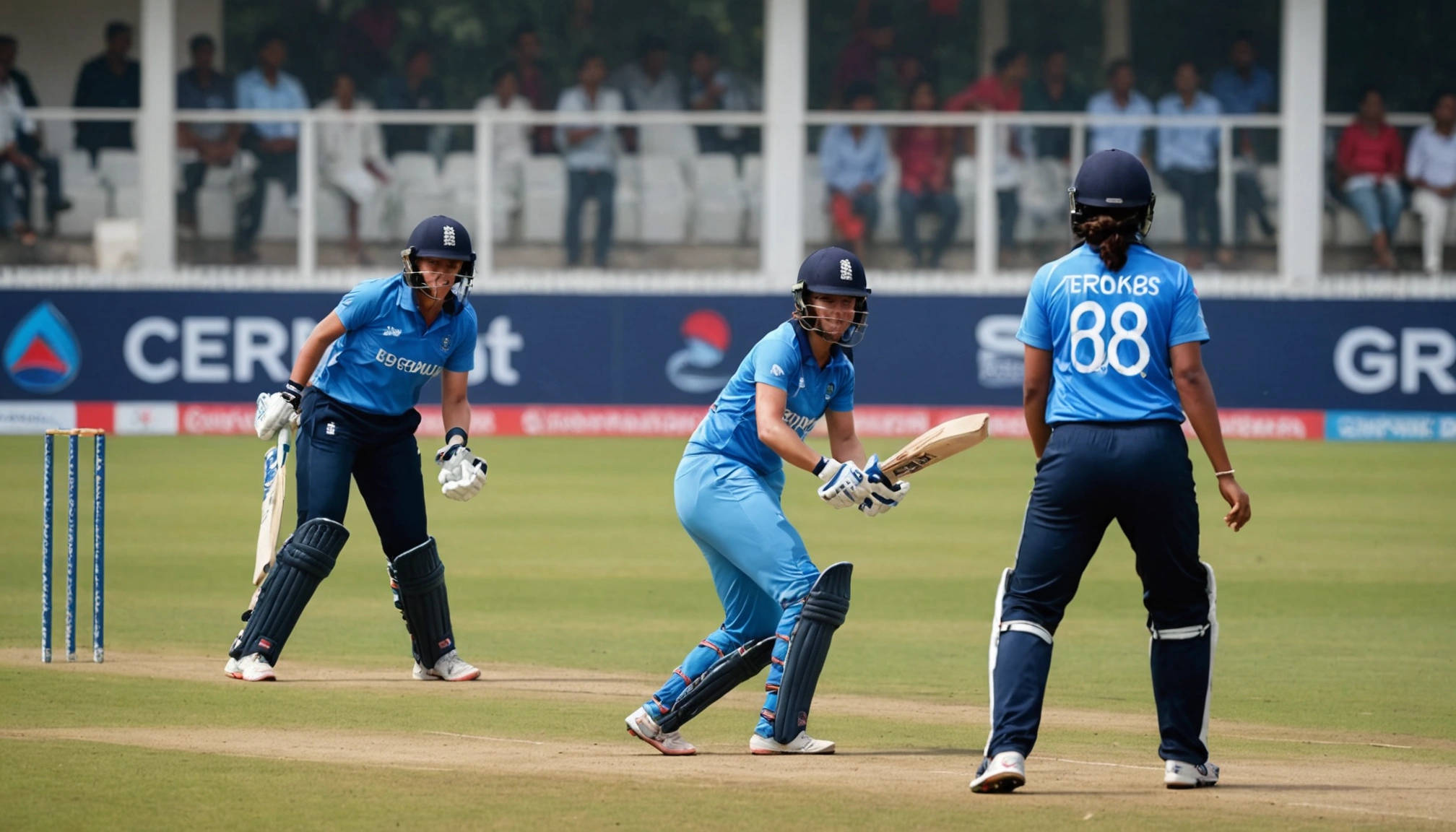England Women Start Strong Against South Africa In World Cup
England’s women cricket team shine with strong bowling and batting performances against South Africa at Guwahati in the World Cup. Key moments analysed.

By Editorial
Introduction to the women’s world cup clash at Guwahati
The 2024 ICC Women’s World Cup is in full swing, and England’s women’s cricket team kicked off their campaign with an impressive display against South Africa at the Barsapara Cricket Stadium in Guwahati. Under the leadership of Nat Sciver-Brunt, who captained England for the first time in this tournament, the team chose to field first after winning the toss, aiming to apply early pressure on the visitors.
This match offered a fascinating insight into the evolving dynamics of women’s cricket, showcasing tactical decisions, player form, and the impact of new coaching strategies.
England’s tactical decision to field first
Choosing to field first was a strategic move by England’s captain Nat Sciver-Brunt, reflecting confidence in their bowling attack. The pitch at Guwahati appeared slower than expected, which South Africa’s captain Laura Wolvaardt also noted, suggesting that batting conditions might be challenging early on but could improve.
From the outset, England’s bowlers, particularly Linsey Smith and Lauren Bell, exploited these conditions expertly. Smith’s remarkable haul of three wickets early in the innings was pivotal in restricting South Africa to a precarious 19-4, signalling the effectiveness of England’s bowling unit.
Bowling highlights and player performances
Linsey Smith’s figures stood out with three wickets for just 16 runs in 3 overs, demonstrating precision and control. Bell, too, contributed with two key wickets, maintaining an economy rate of 6.00 in her 4 overs. This collective effort dismantled South Africa’s top order quickly, with key wickets falling in the span of a few overs.
South Africa struggled to build momentum, with captain Laura Wolvaardt falling victim to a caught and bowled by Smith, indicative of England’s aggressive fielding and strategic bowling plans.
South Africa’s batting challenges and team dynamics
South Africa’s batting lineup, despite being deep and balanced with four seamers as noted by Wolvaardt, found it tough to counter England’s disciplined bowling. Early wickets disrupted their rhythm, and the team slumped to 31-4 after 47 overs.
Laura Wolvaardt’s comments highlighted the team’s focus on a game-by-game approach and adapting to the tournament’s length. Their new coach’s emphasis on playing brave cricket and motivational guidance was aimed at boosting morale, but England’s early dominance tested that resolve.
Key players and their impact
Aside from Wolvaardt, other batters like Tazmin Brits and Suné Luus faced difficulties, falling cheaply to England’s bowlers. The pressure applied by England’s fielders compounded South Africa’s troubles, leading to a below-par total.
England’s batting strategy and leadership milestones
With the ball under control, England’s focus shifted to building a competitive total. Nat Sciver-Brunt emphasised the desire to take wickets at every opportunity while constructing solid innings with the bat. This balanced approach reflects England’s maturity and tactical depth in women’s cricket.
A significant moment in the match was Heather Knight earning her 150th cap, marking an important milestone for the England captain and an inspiration for the team. Knight’s experience is invaluable in guiding younger players through high-pressure matches.
Comparing domestic and international performances
England’s domestic cricket structure, including the Women’s Super League (WSL), has been instrumental in nurturing talent. The recent Wsl round up Everton dominate Liverpool as Man Utd and Tottenham secure wins illustrates the competitive environment where many England players have honed their skills.
This foundation translates into international success, as seen in the tactical discipline and individual performances during the World Cup. The blend of domestic experience and international exposure is key to England’s ongoing dominance in women’s cricket.
The significance of this match for England’s World Cup campaign
This opening match set the tone for England’s aspirations in the tournament. By dismantling South Africa’s batting lineup early and showcasing calm, purposeful batting, England established themselves as strong contenders.
Moreover, the leadership of Nat Sciver-Brunt, supported by experienced players like Heather Knight, provides a solid platform for the team to build on. Their ability to adapt to conditions, execute plans, and maintain composure under pressure will be crucial in the highly competitive World Cup environment.
Looking ahead: what fans can expect
As the tournament progresses, England will face increasingly tough challenges. Their balanced squad, strategic acumen, and depth in both bowling and batting make them a formidable force.
For fans interested in broader English sports narratives, the England sport highlights key moments and insights provide a comprehensive look at the country’s sporting achievements and the cultural significance of events like the Women’s World Cup.
Conclusion: England’s promising start and lessons learned
England’s confident start to the Women’s World Cup against South Africa demonstrates the team’s readiness to compete at the highest level. The strategic use of bowling conditions, combined with leadership milestones and domestic cricket foundations, underline their potential to go all the way.
This match also serves as a reminder of the evolving nature of women’s cricket, where tactical innovation and mental resilience are as important as raw skill. As England progresses, their ability to maintain this focus and adapt will be vital for success.
Related topics
Editorial
Sports expert at SportsScoop
Specialist in sports analysis and journalism
Related articles
Want to read more?
Explore our comprehensive collection of sports articles and analysis, or contact us for more information.



